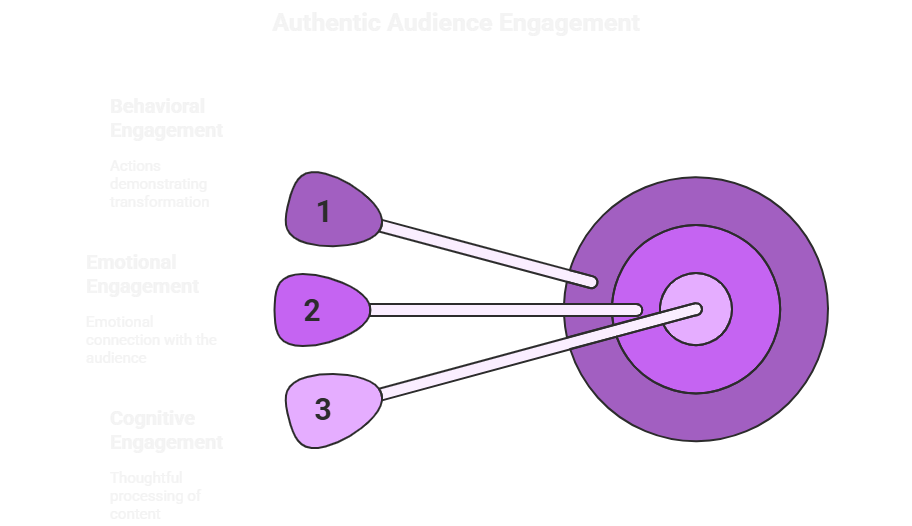Audience Engagement Strategies for 2025

Just imagine the following scenario: You released an excellent chunk of content you believe to be your best. You press the publish button in the surety of a chef bringing out his favourite menu, only to see it sink like free Pizzas in a college hostel in a few minutes. Sound familiar?
Welcome to the cruel truth of the current content production, in which audience attraction has turned as rare as finding a free parking place on the streets at rush hour.
On average, a human being's attention is now limited to 8 seconds, which is less than that of a goldfish. If you have to get started in this attention-deficient world, a proper understanding of audience engagement and the art of capturing it will be a good-to-have skill and the lifeline to your content.
What Is Audience Engagement? (And Why Most People Get It Wrong)
Here we go with the fundamentals. Audience engagement is the degree of interest, emotional investment, and participation your audience takes in whatever you do in terms of content, brand, or platform. However, this is where most marketers go wrong, as they believe engagement only includes vanity metrics such as likes and shares. It will be similar to basing the evaluation of a restaurant based on the number of people passing beside it as opposed to the number of those who eat and visit again.

Authentic engagement of the audience includes three dimensions:
Cognitive engagement happens when your audience thinks about and processes what you give. Those metaphysical contortions of thought occur when a reader reads your blog post and begins to draw lines, challenge suppositions, and gain knowledge.
Emotional engagement is the golden egg - when your content reaches an emotional point. Engaged to prompt laughter, to inspire, to surprise, or even righteous indignation, everywhere there is a strong emotion in need of marketing, there is also the possibility of using that emotion to create an emotional connection, which will turn casual browsers into committed loyalists.
Behavioural engagement is its territory When pushing the rubber meets the road. This is where all the words come to deeds: comments, shares, clicks, subscriptions, or purchases. It is the physical evidence that your content has transformed someone and does not remain a passive viewer, listener or reader anymore.
The Brutal Truth About Modern Audience Engagement
Now, this is the truth no one has the heart to tell you: the vast majority of content today is roughly as exciting as slow-motion paint drying. The world has been overfilled with generic posts, cookie-cutter blogs and social media content that has been rehashed more times than your college textbook.
We are not supposed to have information on how to improve audience engagement; the point is that we are not doing it properly. It is a 2025 game, but we are playing the rules of 2015. When we compose our posts and calculate the hashtag and post times, our audiences long to see something more and show sincere value.
A recent study shows something interesting regarding the measurement of audience engagement. Even physical and physiological signs, such as orchestrated motion, stasis, and even heart rate, have proven to be painstakingly precise predictors of profound engagement to scientists. Although heart rate monitors may not be a various option that you presently have with your blog readers, this study highlights an important message regarding engagement that is not necessarily formed due to clicks and comments. It is more like getting the content that moves them.
The Psychology Behind Engagement: Why We Connect
Using insights about human motivation is key to all effective engagement practices. Tripartite needs of our brain, autonomy (sense of control), competence (sense of skill or expertise), and relatedness (sense of attachment combined with having a sense of belonging) are all about how the brain is wired.
Smart content marketers exploit such psychological forces. You allow your audience freedom when you request them to post their minds. Your competence is being enhanced by giving them something they can improve and be better. You satisfy their need for relatedness when you tell them stories that make them feel understood.
That is the reason why such content marketing is so effective. It is not about addressing somebody by their first name in an email (though nothing is wrong with it). It is about producing content that appeals to a person's particular situation, problems, and dreams. It means the difference between a general How to Lose Weight blog entry and How to Lose Weight when you are a busy parent with little time to shower, much less a meal plan.
Social Media Interaction Strategies That Work
How about social media, the electronic version of the party where all people struggle to become the most intriguing in the house? You will stand out not by yelling louder but by initiating better conversations.

Mastery of Individual Platforms is essential. Instagram is not Facebook, which draws those fancy halo lights around the head; LinkedIn is not Twitter, which is wearing a suit.
There are languages, cultures, and engagement patterns on various platforms. Instagram Stories depend on behind-the-scenes information and surveys, whereas LinkedIn posts are best on topics that generate professional conversations. These nuances should be comprehended to develop appropriate social media interaction strategies.
The magic occurs in Real-Time Audience Interaction. Going live does not only imply putting your face on; it means presenting a common experience. It is not polished presentations that engage people in the most interesting live sessions; it is conversations.
Ask queried questions, give real-time replies to comments, and do not feel too inhibited from revealing your human side. Human beings relate to human beings and not to brands.
The Might of User-Generated Content Strategy cannot be overemphasized. Once your audience gets to build content about your brand, it is not just that they are active listeners but advocates. There is, however, a twist to it; just asking someone to create user-generated content does not work. You have to make experiences worth sharing. Provide the audience with something to chatter about, and they will do so.
A response guarantee is one of the best engagement tricks in blogs that apply to social media. Agree to answer all the comments within 24 hours. This is the easy way of turning your writing into a conversation, not a one-sided conversation.
Blog Engagement Tips: Turning Readers Into Participants
It is in the blogs where serious interaction occurs. As social media is similar to speed dating, blogs allow for long conversations across the dinner table. It is where you can get intimate and build a long-lasting relationship with your audience.
Interactive Aspects Are Change-Makers. It is not telling but being involved. Integrate quizzes, surveys and polls into your posts. Ask open-ended questions not limited to yes/no mono-syllabic answers. Produce material that requires engagement. Avoid writing; Instead of writing, Here are five tips; write: What approaches of these five would be best in your case? Tell me in the comments, and I will provide you with a personal action plan."
The art of Storytelling With Data combines logical and emotional persuasion in the most ideal way. Stories have an appeal to people, but data have their credence. Combine them, and you will have content that will engage and convince. Provide case studies, personal experience, and research-based information proving your points and share what you have to say without losing the readers emotionally.
Engagement can be substantially increased by The Art of Controversy, a responsibly handled method. Make an opinion on the debates in the industry. Break the platitude. Be audacious about the forecasts. You just have to make sure that your controversial opinions have strong arguments and think that it will be part of a healthy conversation, not just something to churn the ocean to get attention.
Advanced Engagement Strategies for 2025
The digital world of the year 2025 is becoming an increasingly different place, with a few notable precursors changing our perspectives on the engagement of the audiences:
The AI-Powered Personalization is maturing. We have gone past demographic targeting to behaviour personalization and psychographics. AI tools can now analyze writing patterns, emotional reactions, and the level of involvement, and this usage allows the creation of more emotional, deep-reaching content.
Micro-communities are substituting large audiences. Rather than seeking to please everyone, successful creators create small communities around particular interests, values, or objectives. These smaller audiences exhibit better engagement rates and higher retention than the gigantic unspecified audiences.
The forms of Interactive Content are developing at a very fast pace. Do not think only about static posts and videos. There are new levels of interactivity through online graphics, choose-your-own-adventure blog posts, and immersive experiences when it comes to storytelling.
It is increasingly becoming necessary to introduce Cross-Platform Storytelling. Your audience does not only have a place on a single platform; hence, your content should not be there. Develop a connected experience transcending various platforms without diminishing messaging and brand voice.
Measuring What Matters: Beyond Vanity Metrics

This is where most marketers are caught short; they are measuring the wrong things. Followers and likes may stimulate your ego but do not settle your electricity bills. Pay attention to metrics which count:
Engagement Rate (number of comments, shares and saves/total reach) informs you how effective your content is. A hundred actively engaged users will add more value to a post than 1,000 passive followers.
The Time on Page part of the blog content says how successfully you are keeping people absorbed. When people jump away after 10 seconds, you do not connect with them.
The quality of comments is more relevant than its quantity. One caring comment also creates a discussion worth more than ten emojis.
The final measure of the effectiveness of engagement is the Conversion Rate of engaged users to subscribers, customers and so on.
The Human Element: Why Authenticity Beats Perfection
Authenticity is the new differentiator in our AI-created fake Instagram-filtered world. Fake is something everyone can see a mile clear, and they yearn to connect with real people with real opinions and weaknesses.
Share your failures as well as success. When you are not at all sure, admit it. Demonstrate your working process with elements of mess. Handle criticism positively and moulded in a manner likely to be learnt by others through the public. These are humanist moments, and more engagement is created by these moments rather than crafted content.
Building Long-Term Engagement: The Community Approach
The most effective content creators are amassing not only audiences but communities. Communities provide shared value, dialogues, and support. They do not only interact with your content but also with each other.
Encourage this by providing opportunities to connect with your audience. Mention members of the community within your work. Incorporate hashtags or forums in which you can discuss with your audience. Organize virtual or real-life activities. You must make your platform emotional because you make them feel like this is their place, not something they are visiting.
The Content Calendar Revolution
Regularity is still the key factor in attracting the audience, but the old rule about posting daily is dead. The quality is always better than the quantity. Posting a single piece of excellent content once a week is better than posting seven average pieces.
Create a schedule of content that is diverse in forms of engagement:
- Competence-building educational material
- Emotional affiliations make up the entertainment
- The content that involves participation
- Content with a focus on the community-enhancing relationship
- BTS material that creates credibility
Looking Forward: The Future of Engagement

Entering further into 2025, some trends will define the future of audience engagement:
The Voice and Audio Content are becoming popular. New opportunities are opening up when it comes to close and personal connections whilst listening to a podcast, voice messages, or on a social platform that is audio-first.
Virtual and Augmented Reality will also provide a reality within immersive engagement, which will not be able to distinguish between virtual and real interaction.
Blockchain and NFTs (despite the hype and scepticism) are establishing new ways of sharing ownership sets in communities and access to exclusive content.
Sustainability and Purpose-Driven Content are becoming engagement strategies as audiences become concerned with the values of the brands they invest in.
Your Next Steps: From Passive to Passionate
Enhancing communication with the audience is not about applying all these strategies described here. It is all about knowing your audience and picking the methods that will appeal most to them. The first thing to do is to answer yourself some questions:
- Who are your actual audience? Demographically, but psychographically. So, what keeps them awake at night? What is it that makes them laugh? What is their agenda?
- What contribution can you make unique? The expertise you have, your vision, and your experiences give a unique combination nobody can duplicate.
- What can you do to turn up the dial on your content engagement? Each of the contents must be within the premises of an invitation to an engagement of a question, challenge, or call to action.
Conclusion: Engagement Is the New Currency
With the reality of a content-creating world, engagement has become the mega-dollar differentiator. You can have as many good ideas as you want, but unless you package them in a way that forces people to stop, think, feel and act, it does not make a difference.
The best content creators in 2025 will not be those who have the greatest audiences or the most advanced tools. These kinds of people will realize that audience engagement is more or less a human interaction. They will be the ones who will be able to cut the noise by speaking more directly to what interests their audience without having to scream louder.
Here is the key takeaway: interaction cannot be avoided in the focus economy: they are not a measurement of engagement but rather a portfolio concerned with it. However, unlike the algorithms, relationships are based on trust, value and pure care of people on the other side of the screen.
It is not whether you can walk the talk of being able to price in the engagement of the audiences. The question is, could you afford not to? It is the key to the survival of your content.
Latest Posts

Content Marketing for Small Business: 10 Steps for 2025
Discover the 10-step content marketing plan for sm...

Digital Writer's Toolkit: Must-Have Content Tools for 2025
Supercharge your writing workflow with the best co...

SEO in 2025: Adapt or Get Left on Page Two
Learn what works (and what fails) in SEO for 2025....
